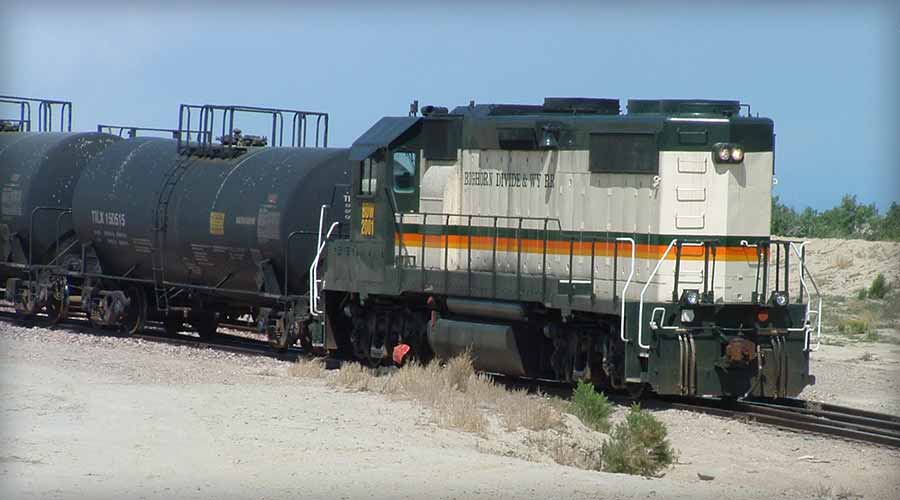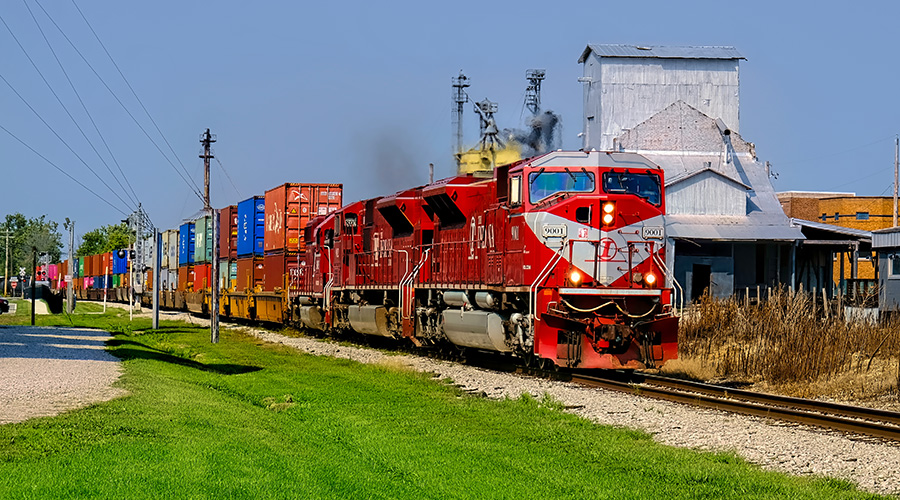Wyoming short line gains first-ever federal grant to climb aboard the sustainability train
10/12/2023
By Jeff Stagl, Managing Editor
Like many other railroads, the Bighorn Divide and Wyoming Railroad (BDW) is seeking to reduce the greenhouse gases emitted by its locomotives.
The first step toward that goal is acquiring a locomotive that meets the U.S. Environmental Protection Agency’s Tier 4 standard, meaning emissions of nitrogen oxide and particulate matter are reduced by about 90%.
But for a small short line such as BDW — which operates 15 miles of track and three yards in Wyoming — buying a new Tier 4 locomotive is too expensive. The price tag for such a purchase likely would reach $5 million to $6 million or more.
Therefore, transforming an old locomotive into a Tier 4 unit is the more affordable and tangible option for BDW.
Over the past two years, the short line has been working on two fronts: developing a refurbishment plan for a decommissioned GP38 locomotive and figuring out a funding strategy. Wabtec Corp. has provided key assistance with the former and the federal Consolidated Rail Infrastructure and Safety Improvements (CRISI) grant program has been a big help with the latter.
In late September, the railroad learned it would obtain a $2.42 million CRISI grant for the project — its first-ever federal grant, says BDW Chief Financial Officer Seth Kucera. The short line plans to reconfigure the GP38 — an old Tier 0 unit built in 1977 that hasn’t been used for several years — into a modernized Tier 4 locomotive.
 BDW operates yards in Bonneville, Casper and Shoshoni, Wyoming, and interchanges with BNSF Railway Co. The short line also offers transload services. Bighorn Divide and Wyoming Railroad
BDW operates yards in Bonneville, Casper and Shoshoni, Wyoming, and interchanges with BNSF Railway Co. The short line also offers transload services. Bighorn Divide and Wyoming Railroad The railroad will provide $600,000 for the $3 million project as part of an 80%/20% funding agreement with the Federal Railroad Administration (FRA), which manages the CRISI program.
“As a small railroad, we could not have afforded to do this on our own,” says Kucera.
BDW began exploring a CRISI grant in 2021 and spent about four months developing an initial plan. Then last year, the short line submitted an application after the FRA issued a notice of funding opportunity (NOFO) for fiscal-year 2022 grants.
“We read up on CRISI grants and then jumped on the NOFO,” says Kucera.
It took four or five months to work on the application, which was a complex and time-consuming process.
“It was a very daunting task,” Kucera says.
Wabtec helped make the process more manageable by completing half of the application form.
“Wabtec is a big partner in this,” says Kucera.
BDW contracted Wabtec for the project because the company offers a complete locomotive refurbishment platform that suits the short line’s needs and has developed a lot of expertise with modernizing motive power and meeting Tier 4 requirements.
The GP38 will be stripped down to its cab and chassis. A new engine will be installed and the cab will be refreshed with modern electronics, says Kucera.
BDW now is working with Wabtec to provide the FRA with the scope of work and details as to how the grant money will be spent. The short line will need to provide updates to the FRA as the project advances.
The work is expected to start in January. Wabtec estimates it will take 18 to 24 months to complete.
The motive-power fleet operated by BDW — which interchanges with BNSF Railway Co. — also includes two SW1500 switchers, and one SD18 and one SD20-3 locomotive.
The CRISI award likely won’t be the one and only federal grant for BDW, which was established in 1985. Since the short line continues to pursue a number of objectives — including more emission reductions — there could be another effort to land a grant at some point, Kucera believes.


